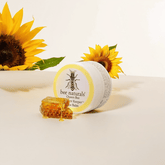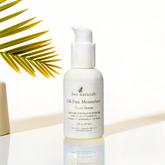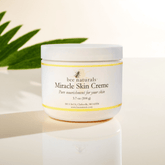What’s the deal with Surfactants
In our quest for a deeper understanding of the chemical components that shape our everyday lives, including skincare, surfactants are one class of compounds often overlooked yet undeniably fascinating. Whether we realize it or not, surfactants play a vital role in countless products we encounter daily, from cleaning agents to popular skincare items and even in the food we consume. But what exactly are surfactants, and why are they so significant? Join us as we demystify these intriguing substances and understand their potential impact on different skin types.
Understanding surfactants: what are they, and how do they work?
Surfactants, known as surface-active agents, are chemical substances frequently found in skincare products. Surfactants function largely as cleaning agents in skincare. By lowering the surface tension between water and oil, they aid in removing dirt, extra oil, germs, and pollutants from the skin’s surface.
Surfactants also add to the overall sensory experience and texture of skincare products. They aid in producing foaming and lathering qualities, which are frequently linked to efficient cleaning and a satisfying sensation during product application.
Aside from that, surfactants can also improve the delivery and absorption of active substances in skincare products. They make it easier for beneficial substances to reach and sink into the deeper layers of the skin, where they may exert their desired effects by lowering the skin’s surface tension. Therefore, checking the ingredients thoroughly to balance efficacy and mildness is crucial. This is because harsh surfactants may interfere with the skin’s normal barrier function, causing dryness or irritation.
Common surfactants used in skincare
Different surfactants are frequently used in skin care products to achieve the desired cleaning, foaming, and emulsifying qualities. It’s vital that you keep in mind that the mildness and suitability of these surfactants for various skin types can vary. Here are some typical surfactant types used in skincare products:

Sodium Lauryl Sulfate (SLS)
Sodium lauryl sulfate (SLS), also known as a surfactant, serves various functions, primarily as a cleansing agent in skincare products. It belongs to the sulfate family and is derived from sources like coconut, palm kernel, or petroleum. With its lathering properties, SLS promotes thorough cleansing and aids in emulsifying ingredients within products. Because of SLS’s ability to lower skin surface tension and form a lather, it can effectively remove dirt, oil, and impurities from the skin and hair. SLS, on the other hand, can be abrasive and drying, especially on sensitive skin. It may deplete the skin’s natural oils, thus, persons with sensitive skin should choose SLS-free cosmetics.
Cocamidopropyl Betaine (CAPB)
A gentler surfactant made from coconut oil is CAPB. It is frequently included in personal care products, especially those for dry or sensitive skin. As a mild cleanser that removes dirt and pollutants without leaving the skin too dry or irritated, CAPB has strong foaming qualities. It is a well-liked component in moisturizing body washes and face cleansers because of its reputation for conditioning and moisturizing the skin.
Decyl Glucoside
Decyl glucoside is a mild, non-ionic surfactant generated from renewable plant sources, most frequently from corn or coconut oil. It is a popular option for people with sensitive or reactive skin since it eliminates dirt and oil effectively without damaging the skin’s natural moisture barrier. As a result, it is frequently utilized in infant skincare products.
Coco Glucoside
Coco glucoside is another non-ionic surfactant derived from coconut oil and glucose. It is considered a gentle cleanser that is suitable for all skin types. Coco glucoside effectively removes impurities without causing dryness or irritation. It has good foaming capabilities, creating a satisfying lather in various personal care products. Coco glucoside is commonly found in natural and organic skincare products, as it is derived from renewable sources and is biodegradable.
Polysorbates
Polysorbates, such as Polysorbate 20 and Polysorbate 80, are mild surfactants commonly used as emulsifiers in skincare products. Like most other surfactants, this surfactant contributes to creating smooth textures and ensuring even applications. This results in enhancing the overall sensory experience of skincare products. Frequently added in creams, lotions, and serums, Polysorbates facilitate the proper blending of oil and water-based ingredients, preventing separation and improving the product’s efficacy.
Disodium Cocoamphodiacetate
Disodium cocoamphodiacetate is an amphoteric surfactant derived from coconut oil. It exhibits mild cleansing properties and is often used in gentle facial cleansers suitable for sensitive or dry skin types. It helps to remove impurities without causing excessive dryness or irritation. Disodium cocoamphodiacetate is known for maintaining the skin’s natural pH balance, which is important for overall skin health. It is gentle enough for daily use and provides a soothing and refreshing cleansing experience.
The relationship between surfactant foam and skin safety
Like earlier said, surfactants are essential ingredients in washing solutions used in the cosmetics industry. Natural surfactants from natural sources undergo some chemical processing to make them suitable for cosmetic use. They aid in purging the skin of dirt, oil, and germs, leaving it clean and refreshed. But not all surfactants are the same, and it’s important to comprehend how they affect various skin types.
Foam doesn't equal clean

Many of us are used to thinking that using a foamy cleaner will result in a thorough cleaning. However, it’s important to remember that a formulation doesn’t always have to produce foam to clean effectively. Although the thick lather gives the impression of cleanliness, this isn’t always the case. The surfactants that create foam can be extremely stripping, removing the natural oils that hydrate and protect the skin. As a result, cause further irritation and harm the moisture barrier in those with dry or mature skin.
The Dermatitis Connection
Dermatitis is a common skin problem that occurs when your body comes in contact with something irritating your skin. Its symptoms include redness, itching, and inflammation. It can be very uncomfortable and painful. According to research, one of the irritants that can cause dermatitis is surfactants. Studies have shown that it can easily cause or exacerbate dermatitis symptoms. This is because strong or harsh surfactants have the potential to upset the skin’s normal pH balance and remove essential oils, resulting in irritation and dryness. In fact, mild surfactants can also cause dermatitis for some skin types, especially mature skin.
Surfactants can also strip the skin’s surface of its barrier-protecting lipid layer, leaving it more vulnerable to environmental allergens and irritants. Some people may get allergic responses or irritating contact dermatitis due to this.
On the other hand, if used excessively or by someone allergic or sensitive to them, even gentler surfactants can result in dermatitis. Because every individual has a different type of skin, what works for one person may not work for another. When selecting skincare products, it’s critical to consider your skin type and any known allergies. Instead, choose products that are surfactants free.
The right cleanser for mature or dry skin
An approach to gentle and nutritious washing is necessary for those with dry or mature skin. These skin types shouldn’t use foaming cleansers since they are more drying. Instead, use non-foaming cleaners with a moisturizing sensation, such as cream or gel-based cleansers. To find solutions that blend effective washing with skin-friendly qualities, look for those that include gentle surfactants. Mild surfactants are intended to clean the skin without removing its natural moisture. These surfactants work more gently, delivering a complete clean while preserving the integrity of the skin.
How to choose the right cleanser
There are a few key things to consider when selecting a dry or mature skin cleanser. You may choose a cleanser that meets your unique demands by being aware of these elements and making educated decisions.
In the beginning, it’s advantageous to look for cleansers that are expressly marked as “gentle” or “for dry skin.” Usually, softer surfactants and moisturizing agents are used in these formulations. You may stay away from harsh substances that could aggravate dryness or irritate skin by using a mild cleanser.
The ingredient list of possible cleansers must be carefully examined; second. It is preferable to avoid products that include harsh surfactants like sodium lauryl sulfate (SLS) or sodium laureth sulfate (SLES) in order to prevent dryness and irritation. Although these surfactants are renowned for their potent cleaning abilities, dry or older skin types may find them to be unduly drying.
Next, think about the cleanser’s composition. Cleansers with a cream or gel basis typically work better for dry or mature skin since they hydrate and nourish the skin. Choosing cleansers with extra moisturizing qualities might be advantageous in addition to the formulation. Keep an eye out for components like hyaluronic acid, glycerin, or ceramides. These elements assist the skin’s natural barrier function and restore moisture levels in the skin.
Conclusion
While surfactants are essential to cleansers, not all surfactants are suitable for every skin type. The belief that foam equals cleanliness is a misconception, especially for individuals with dry or mature skin. Foaming cleansers can be overly harsh and strip away the skin’s natural oils, leading to discomfort and potential damage. As such, it is important to look for products that function for your skin type, especially if you have sensitive skin.







Leave a comment
Please note, comments need to be approved before they are published.